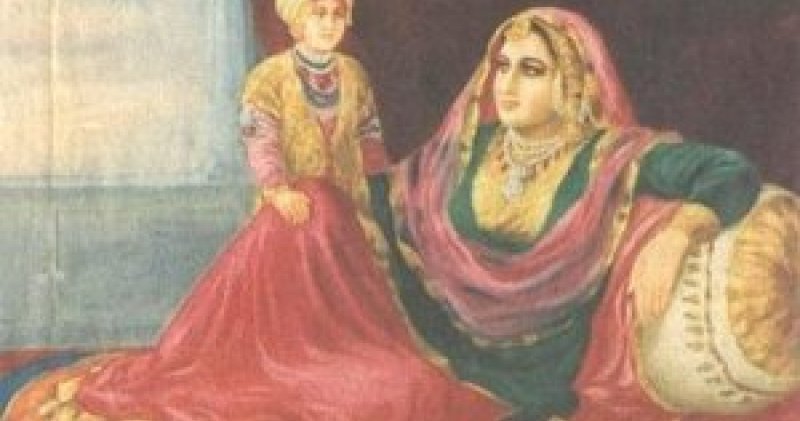The 2009 film Rebel Queen shares the incredible tale of the last Lahore Sikh ruler, a brave Maharani who fought two wars against India British rule. She continued to be a source of motivation for younger Asian women today.
Maharani Jindan
In 1861, Maharani Jindan Kaur, the lastened Sikh queen of Lahore, strolled through Gardens in London Kensington. She wears traditional clothes with the crinoline and has pearls and emeralds under the bonnet. Known for his defiance against the British empire, Jindan Kaur spent much of his life fighting against the Punjab unfair takeover, a vast region from Kashmir to Khyber Pass. A film titled “Rebel Queen,” depicts her life, premiering at the New York International Sikh Film Festival and was shown in the UK in 2009. Jindan Kaur passed away in 1863 and was laid to rest in west London.
Her rebellion started when her hubby, the last Maharaja of the Punjab, died in 1839. The British then attempted to take control of the kingdom from the Duleep Singh infant son. As the regent, Jindan fought two unsuccessful wars against the British, resulting in the invasion of Punjab. Despite the lack of military experience and young age (in the early 20s), Jindan was the strong leader. British historian Peter Bance praised her as a very gutsy woman who strongly resisted the British and actively managed the Punjab affairs.
Professor Nikky-Guninder Singh of Colby US, said: She is extraordinary in how she discarded ruling purdah and sati, ruling at the time, and ledding the courts, having meetings with CM and the armies. All of them took her counsel.”
Strong Queen Jindan standing against oppressors
The Maharani posed a bigger challenge to Indian British rule. They try to ruin the reputation by calling her the “Messalina of the Punjab,” portraying her as the rebellious seductress. Since she didn’t cooperate and had a good influence on Duleep, the British feared an uprising among the Punjabi humans. As a result, they selected to separate the son and mother.
Nine-year-old Duleep was taken to England, converted to Christianity, and living as the English gentleman with Queen Victoria as a buddy. Meanwhile, Maharani Jindan facing adversity, was dragged from Lahore’s court, imprisoned in Chunar Fort and Sheikhupura and then in Uttar Pradesh.
Despite imprisonment, she cleverly disguises herself as a servant and escapes, traversing 800 miles of forests to explore refuge in Nepal. In a letter to Britain, she claimed her escape was “magic.” Unfortunately, she couldn’t reclaim the kingdom for the son. However, they get-together years later, prompting the Maharajah to return to Sikhism, undoing Britain trying to brainwash him.
Rebel Queen-The film
Bicky Singh, an American entrepreneur, was motivated by the compelling tale of Jindan, prompting him to invest approximately $25,000 in the Rebel Queen production. The movie, directed by Michael Singh, a filmmaker from California, highlights the dramatic and tragic aspects of Jordan’s life. Described as the heroic figure, her tale is well-documented by the British, and provides a unique perspective on the Sikh history, particularly considering the limited records of women in the context.
Jordan’s son’s correspondence with Queen Victoria adding an absorbing dimension, makes the narrative much more relatable for the casual viewers. Michael Singh asserted that Jindan symbolized both injustice and indignation, along with the Sikhs’ incapability to preserve the kingdom. He described her as an iconic figure, noting that she was the last to disobey the British, marking a crucial history moment.
Many intelligent South Asian female artists, such as Shazia Mirza, Gurinder Chadha, and Meera Syal, have highlighted the challenge of British Asian identity. While the struggle of displacement is crucial to document, there is a remarkable lack of narratives such as Maharani Jindan that search out into experiences predating the challenges faced by family grappling with being Asian in the mostly white society.
In contemplating my own tale, should I start with my parents’ immigration to England in the 1970s. Or could drawing motivation from Maharani Jindan’s experiences serve as insights to making sense of the present-day life? Explore historical perspectives could serve a unique lens through which to identify the complexities of assimilation and identity.
In England, many humans tended to associate South Asian women with trouble issues like “honour” killings, forcing marriages, foeticide and domestic violence. While these are sincere issues that we should address, positive tales of Asian women’s achievements, such as those recognized by the Asian Women of Achievement awards, often don’t get sufficient attention in the history books, media, art. This lack of representation left younger South Asian girls or British Punjabi Sikh with limited dream role models. It’s necessary to celebrate and highlight the achievements of these women to serve more optimistic role models.








